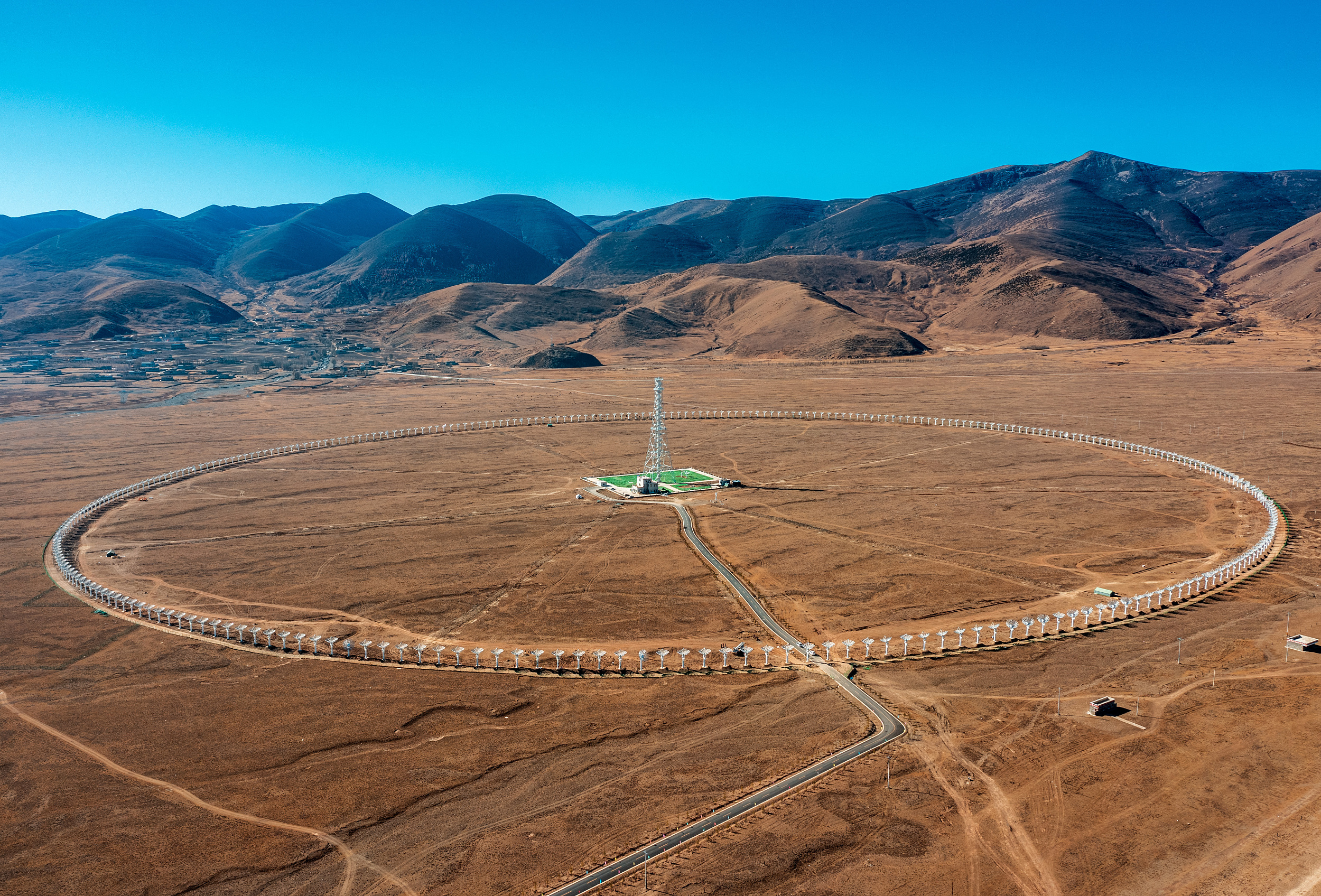World's Largest Telescope Array to Study the Sun

The Daocheng Solar Radio Telescope is built in Ganzi Tibetan Autonomous Prefecture, southwest China's Sichuan Province. (PHOTO: VCG)
By WANG Xiaoxia
With the last piece of hardware installed, the construction of the world's largest radio telescope array for studying the sun was completed on November 13.
Located in southwest China's Sichuan province, the Daocheng Solar Radio Telescope (DSRT) as part of the country's phase-2 Meridian Project is projected to begin its trial operation by June 2023.
The solar radio imaging telescope array consists of 313 six-meter-wide antennas. The antennas are evenly distributed on a one-kilometer-diameter circle, and a 100-meter-high calibration tower at the center sends calibration signals to all the antennas.
The 313 antennas work in collaboration and form a huge, virtual telescope at the frequency range of between 150 to 450 megahertz to achieve high -precision imaging of solar events, including solar eruptions and how they affect conditions around Earth.
In addition, sitting on the edge of the Qinghai-Tibet Plateau, the telescope has the Himalayas to protect it from some atmospheric turbulences ensuring a clear sky, which allows it to spot weaker signals emitting from the sun.
The Meridian Space Weather Monitoring Project is a mega-project of science research on space weather monitoring, proposed by several research institutes and universities in China in the 1990s. Its first phase was completed in 2012 and the second phase was approved in 2019 and is under construction.
The project sets up large-scale ground-based monitoring stations to investigate the causes of space weather, to understand the processes of catastrophic events so as to help ensure the safety of space activities such as satellite operation, according to the National Space Science Center under the Chinese Academy of Sciences, the designer of the DSRT.







